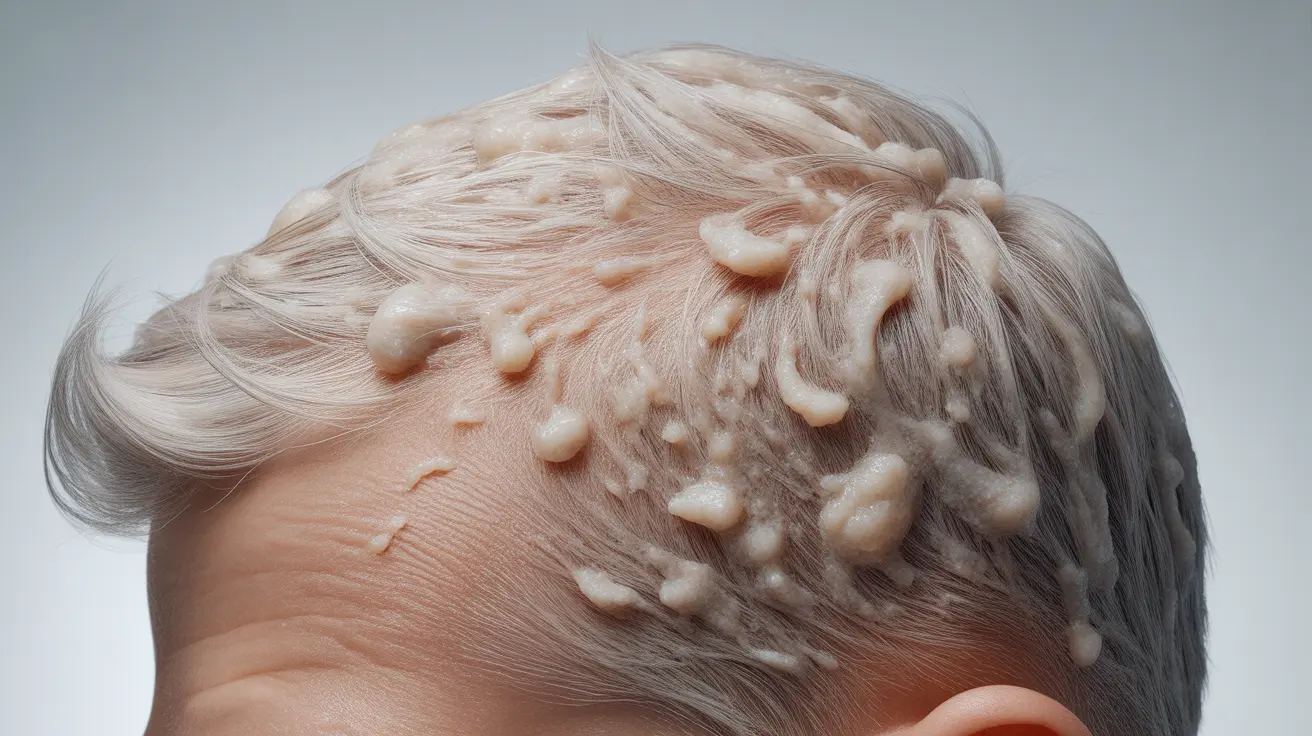If you've noticed a white, waxy substance accumulating on your scalp, you're not alone. This common condition can be both uncomfortable and concerning, potentially leading to irritation and affecting hair health. Understanding the causes and solutions for scalp buildup is essential for maintaining optimal scalp and hair health.
While often confused with dandruff, white waxy buildup on the scalp is distinctly different and may require specific treatment approaches. Let's explore what causes this condition, how to address it effectively, and when you might need professional medical attention.
Understanding White Waxy Scalp Buildup
White waxy buildup on the scalp typically consists of a combination of natural oils (sebum), dead skin cells, and residue from hair care products. This accumulation can create a thick, paste-like substance that adheres to the scalp and hair roots, potentially leading to discomfort and hair care challenges.
Common Causes of Scalp Buildup
Several factors can contribute to white waxy accumulation on your scalp:
- Overactive sebaceous glands
- Infrequent washing or improper cleansing
- Heavy use of styling products
- Hormonal changes
- Environmental factors
- Certain medical conditions
Impact of Hair Care Products
Many hair care products can contribute to scalp buildup, particularly those containing heavy oils, silicones, or waxes. These ingredients, while beneficial for some hair types, can accumulate over time if not properly removed during washing.
Products That May Cause Buildup
- Heavy conditioners
- Styling creams and pomades
- Leave-in treatments
- Dry shampoo
- Silicon-based products
Treatment Options
Addressing white waxy buildup requires a systematic approach to both remove existing accumulation and prevent future occurrences.
Immediate Solutions
For quick relief from scalp buildup:
- Use a clarifying shampoo
- Try scalp exfoliation treatments
- Perform regular scalp massage during washing
- Use apple cider vinegar rinses
- Consider tea tree oil treatments
Long-term Prevention
To prevent future buildup:
- Establish a regular washing schedule
- Choose lightweight hair products
- Use proper washing techniques
- Maintain a healthy diet
- Stay hydrated
When to Seek Medical Help
While scalp buildup is often manageable at home, certain symptoms warrant professional medical attention:
- Severe itching or pain
- Persistent redness
- Bleeding or scabbing
- Hair loss
- Strong odor
- Inflammation that doesn't improve with home treatment
Frequently Asked Questions
What causes white waxy buildup on the scalp and how is it different from dandruff? White waxy buildup consists of sebum, dead skin cells, and product residue, forming a paste-like substance. Unlike dandruff, which produces loose, dry flakes, waxy buildup is more adherent and often feels greasy or sticky.
How can I remove and prevent white waxy buildup on my scalp effectively? Use clarifying shampoos regularly, incorporate scalp exfoliation into your routine, and ensure thorough rinsing after washing. Prevention includes choosing lightweight products, maintaining proper washing frequency, and avoiding product overuse.
What hair products or ingredients contribute to white waxy buildup on the scalp? Heavy silicones, mineral oils, petroleum-based ingredients, and thick styling products are common contributors. Products labeled as "heavy-duty" or "intensive" may be more likely to cause buildup.
When should I see a doctor about persistent white flakes or buildup on my scalp? Consult a healthcare provider if you experience severe itching, inflammation, bleeding, unusual odor, or if the condition persists despite proper home care measures.
Can scalp conditions like seborrheic dermatitis or psoriasis cause white waxy buildup on the scalp? Yes, both conditions can cause waxy buildup along with other symptoms. Seborrheic dermatitis often produces oily, yellow-white scales, while psoriasis typically creates thicker, silvery-white patches that may require medical treatment.




